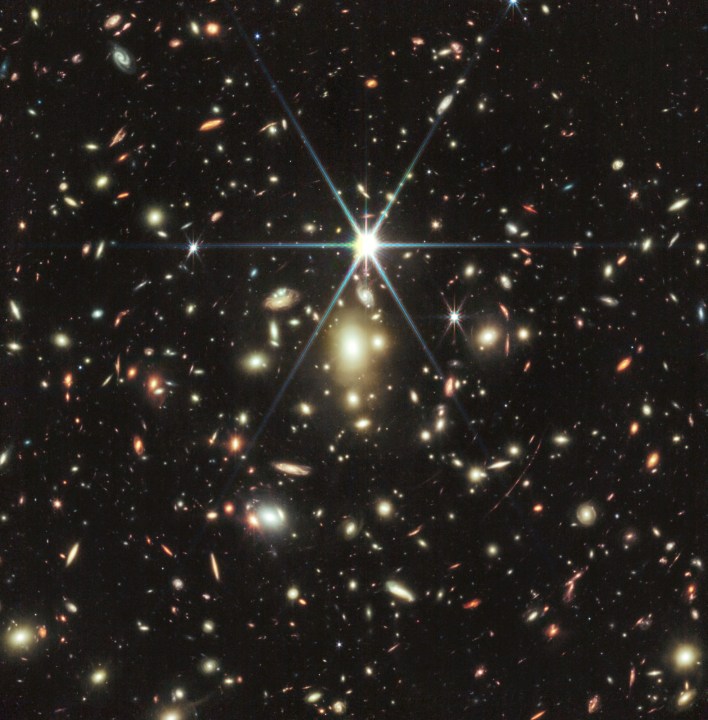The James Webb Space Telescope has captured a stunning image of the most distant star ever discovered. Discovered by Hubble in 2020, the star named Earendel is located an astonishing 28 billion light-years away. While in the previous Hubble image, the star was only visible as a small blob, these new observations from Webb are detailed enough to reveal information about the star like its type and information about the galaxy in which it resides.
The Webb image shows a galaxy cluster called WHL0137-08, which is so massive that it bends spacetime and acts like a magnifying glass for the more distant galaxies behind it. Some of these distant galaxies being magnified include one called the Sunrise Arc, which hosts Earendel. The Sunrise Arc is located near the end of one of the spikes from the bright central star, at around the five o’clock position. A zoomed-in version of the image shows the Arc and Earendel within t.

Due to this magnification effect, called gravitational lensing, Earendel is magnified by an amazing factor of 4,000. As the star is so distant, we are seeing it as it was an extremely long time ago due to the amount of time it takes light to travel the great distance. The star is thought to be from 1 billion years after the big bang, so studying it can help us learn about some of the early stars.
One surprise to the researchers is that there are indications that Earendel may have a companion star, cooler and redder than it is, although it’s hard to be sure because the light from the possibly two stars blurs together. But scientists can tell some information about Earendel with more certainty, such as that it is a type called a massive B-type star, and that it is more than twice as hot as our sun and around a million times more luminous.
The data was collected using Webb’s NIRCam camera instrument, but the researchers took observations of the region using Webb’s NIRSpec spectroscopy instrument as well. They are now analyzing these data too and hope to learn about the host galaxy’s composition and more exact figures for its distance from Earth.
Editors' Recommendations
- James Webb images capture the galactic winds of newborn stars
- See what James Webb and Hubble are observing right now with this tool
- See 19 gorgeous face-on spiral galaxies in new James Webb data
- James Webb Space Telescope celebrated on new stamps
- James Webb captures a unique view of Uranus’s ring system




